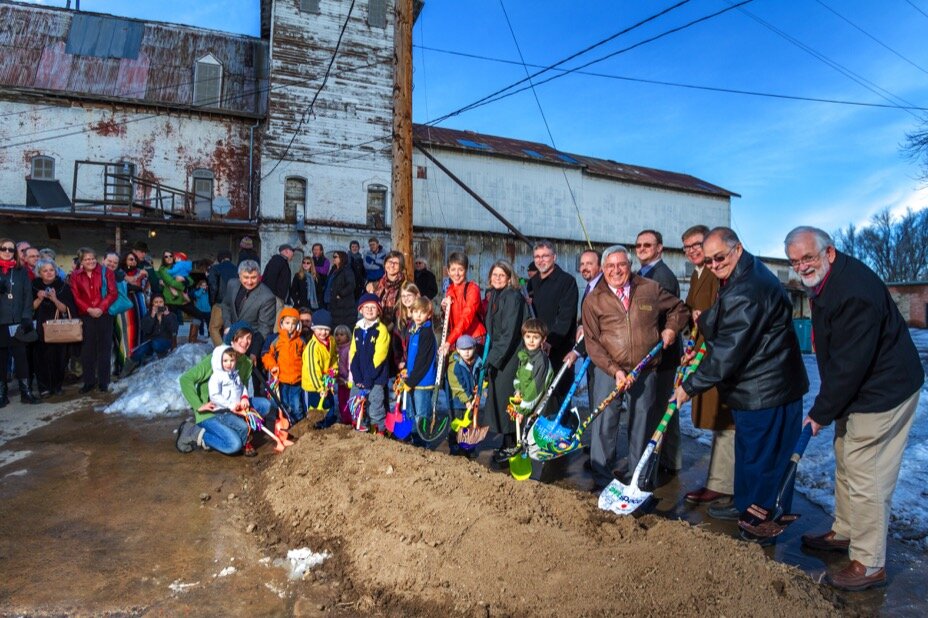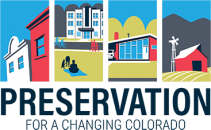…Collaborative
Successful preservation projects are the result of effective teamwork and collaboration. For example, a building rehabilitation might involve architects, developers, and builders, who create a sensitive design and select the right building materials; local planners and elected officials who ensure the project complies with design standards and regulations; and fundraisers and nonprofit preservation advocates who provide the spirit and legwork to bring the project to fruition. A group effort brings a great project across the finish line. This report looks at many types of successful partnerships, including:
- Scenic and Historic Byways: Tourism and economic development officials, federal and state representatives, local officials, and many volunteers all come together to promote preservation and economic development along some of Colorado’s most spectacular and scenic roadways.
- Main Street: Local planners and volunteers, with help from state experts, work to strengthen and invigorate the economy and historic character of Colorado’s downtowns.
- Creative Communities: Artists, architects, state experts, and others all help adapt unique historic spaces to those where the arts can thrive.

…Always Changing
While the traditional focus on restoring and adapting old buildings is always fundamental to a preservationist’s work, today’s projects increasingly involve cultural landscapes beyond the buildings themselves, as well as older resources that may not be formally designated as historic. Effective preservation means coordinating within a wide range of rapidly changing fields, such as land use planning, affordable housing, science, and technology. Like these fields, preservation continues to adapt and move forward. This report looks at the changing nature of preservation in Colorado, including:
-
New Audiences: Colorado’s populations of both seniors and millennials are increasing rapidly, and historic buildings are seen as creative options to meet the needs of both groups.
-
New Placemaking: As communities across our state grow, they are looking to preservation for lessons about how to identify and maintain unique community character while still allowing growth and development.
-
New Economy: Colorado’s workforce is becoming younger, while the industries employing Coloradans are increasingly based in creative, high tech, and other knowledge-based industries. New residents and new businesses alike are increasingly looking to locate in historic buildings and neighborhoods due to their unique character and sense of place.
- New Climate Challenges: Like all states, Colorado faces new demands associated with a changing climate, including threats associated with wildfires and flood. Preservationists are stepping up to both protect historic resources from natural hazards and also better integrate preservation into local disaster planning.
…Statewide
Great preservation work is happening every day all across Colorado, in communities from small to large, from east to west, and from rehabilitation to infill. Perhaps the one common thread to all the exciting projects is that each one is unique! This report looks at successful preservation projects from across the state in both rural and urban communities:
-
Protecting Rural Colorado: With projects like Home on the Range in southeastern Colorado and the Hayden Granary in Hayden, landowners and preservationists have come together to identify and protect unique places that help tell the story of Colorado’s agricultural, mining, and ranching heritage.
-
Thriving Small Towns: Over 44 percent of grants from the State Historical Fund have gone to projects in small towns, ensuring the benefits of historic preservation are shared among all communities in the state. Lake City and Lamar are just two communities that have recognized the value of preservation as a tool to reinvigorate their historic downtowns and create thriving places that support local economies.
- Big-City Colorado: Downtown areas in Colorado’s larger cities, such as Denver and Golden, have also benefited from historic preservation and restoration initiatives over the past 50 years. While helping to spur economic development in these communities, historic preservation has also led to less tangible benefits, such as the transformation of Denver’s Union Station into an important regional transportation hub.

